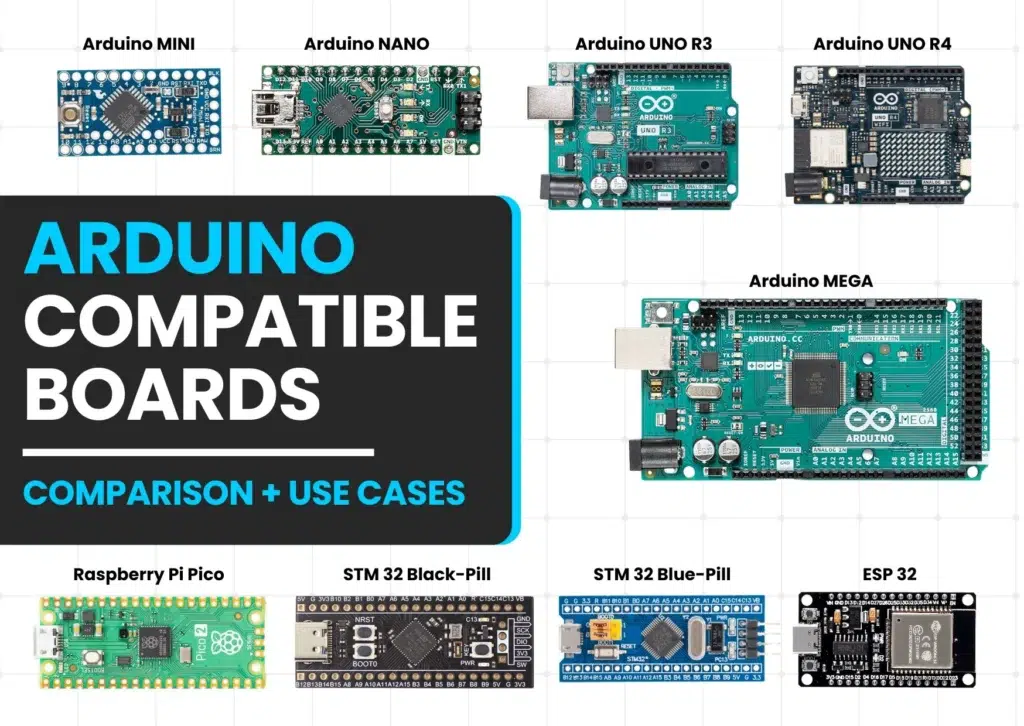Difference Between Arduino and Raspberry Pi: Which One is Perfect for Your 2025 Projects?

Discover the difference between Arduino and Raspberry Pi in 2025. Compare features, use cases, hardware specs, and find out which platform suits your project needs best.
Focus Keyword: difference between Arduino and Raspberry Pi
🔍 Introduction
If you’re diving into electronics or programming, chances are you’ve heard about Arduino and Raspberry Pi. But the difference between Arduino and Raspberry Pi might not be obvious—especially for beginners.
This 2025 guide explains the difference between Arduino and Raspberry Pi, helping you choose the right board for your DIY, educational, or industrial applications.
🧩 What is Arduino?
Arduino is an open-source microcontroller platform used to build simple hardware-based systems. It’s ideal for input/output tasks like controlling motors, LEDs, and sensors.
✅ Key Features:
- Microcontroller-based (no OS)
- Easy to program with C/C++
- Real-time performance
- Extremely low power usage
⚡ Common Arduino Projects:
- Automatic plant watering system
- Digital thermometer
- Line-following robot
- Motion-detecting alarm system
🖥️ What is Raspberry Pi?
Raspberry Pi is a small single-board computer capable of running full operating systems like Linux. It’s suited for tasks involving software, user interfaces, and data processing.
✅ Key Features:
- Runs full Linux OS (Raspbian, Ubuntu)
- Supports Python, Java, C++, and more
- Comes with HDMI, Ethernet, Wi-Fi, USB ports
- Excellent for multitasking
⚡ Common Raspberry Pi Projects:
- Home automation system
- Personal web/cloud server
- Retro game console
- AI and face recognition with OpenCV
⚙️ Key Differences Between Arduino and Raspberry Pi (2025)
| Feature | Arduino Uno | Raspberry Pi 4 Model B |
|---|---|---|
| Core Type | Microcontroller (ATmega328P) | Full Computer (Broadcom SoC) |
| Operating System | None | Linux (Raspberry Pi OS) |
| Programming | C/C++ | Python, Java, C++, many more |
| GPIO Pins | 14 Digital, 6 Analog | 40 GPIO (all digital) |
| Power Usage | Very Low | Moderate to High |
| Networking | Requires shield | Built-in Wi-Fi, Bluetooth, Ethernet |
| Storage | Flash memory | MicroSD (up to 1TB) |
| Display Output | Not built-in | HDMI, Display interface |
| Ideal For | Hardware control | Software-intensive tasks |
| Real-Time Processing | Yes | No (due to OS layer) |
🧪 Real-World Use Case Scenarios
🛠️ Use Arduino When:
- Real-time hardware control is critical
- Project is battery-powered
- You’re building sensors, automation, or embedded systems
🧠 Use Raspberry Pi When:
- Complex software processing is required
- You need internet connectivity, UI, or storage
- You’re developing an AI, media, or IoT system
🤝 Can You Use Arduino and Raspberry Pi Together?
Yes! Combining both gives you the best of both worlds.
Example: Arduino handles motor/sensor controls, and sends data to Raspberry Pi, which logs it to the cloud or triggers software-based responses.
This hybrid architecture is powerful and common in IoT solutions.
🧠 Educational Value & Learning Curve
📘 Arduino:
- Great for understanding electronics and embedded systems
- Simplified development environment
- Teaches hardware interfacing from scratch
🖥️ Raspberry Pi:
- Best for learning Linux, servers, and scripting languages
- Introduces software tools, networking, and data processing
🌐 Community Support and Resources
Arduino:
- Active global open-source developer base
- Massive collection of tutorials, forums, and YouTube channels
- Official Forum: forum.arduino.cc
Raspberry Pi:
- Supported by Raspberry Pi Foundation
- Frequent software updates and OS improvements
- Official Forum: forums.raspberrypi.com
📦 Pros and Cons

✅ Arduino Pros:
- Low power and cheap
- Real-time operations
- Easy hardware interfacing
❌ Arduino Cons:
- Lacks multitasking
- No GUI or operating system
✅ Raspberry Pi Pros:
- Can run complex apps and software
- Built-in networking and display interfaces
- Perfect for coding and Linux development
❌ Raspberry Pi Cons:
- Higher power consumption
- Not suitable for time-critical hardware operations
❓ Frequently Asked Questions
1. What is the difference between Arduino and Raspberry Pi?
Arduino is for real-time hardware control; Raspberry Pi is a full computer for software and networking.
2. Which is better for beginners: Arduino or Raspberry Pi?
Arduino for electronics starters; Raspberry Pi for coders and system learners.
3. Can Raspberry Pi replace Arduino?
Not for real-time tasks. It can’t respond fast enough for precise hardware timing.
4. Can Arduino run Linux?
No. It lacks the resources and architecture for an operating system.
5. Can Raspberry Pi be used for real-time control?
Not reliably. Use Arduino for such applications.
🏁 Final Verdict
| For You If You Want… | Choose |
| Learn electronics or circuits | Arduino |
| Build full-featured applications | Raspberry Pi |
| Both real-time and smart processing | Use both |
Understanding the difference between Arduino and Raspberry Pi helps you build smarter projects in 2025—whether for education, automation, or innovation.
🔗 Recommended Reading
- 👉 Basic Electronics Roadmap
- 👉 Introduction to Arduino
- 👉 Advanced Electronics Roadmap
- 👉 Click Here to Learn Arduino From Basic
Explore more guides at Electrolab!











